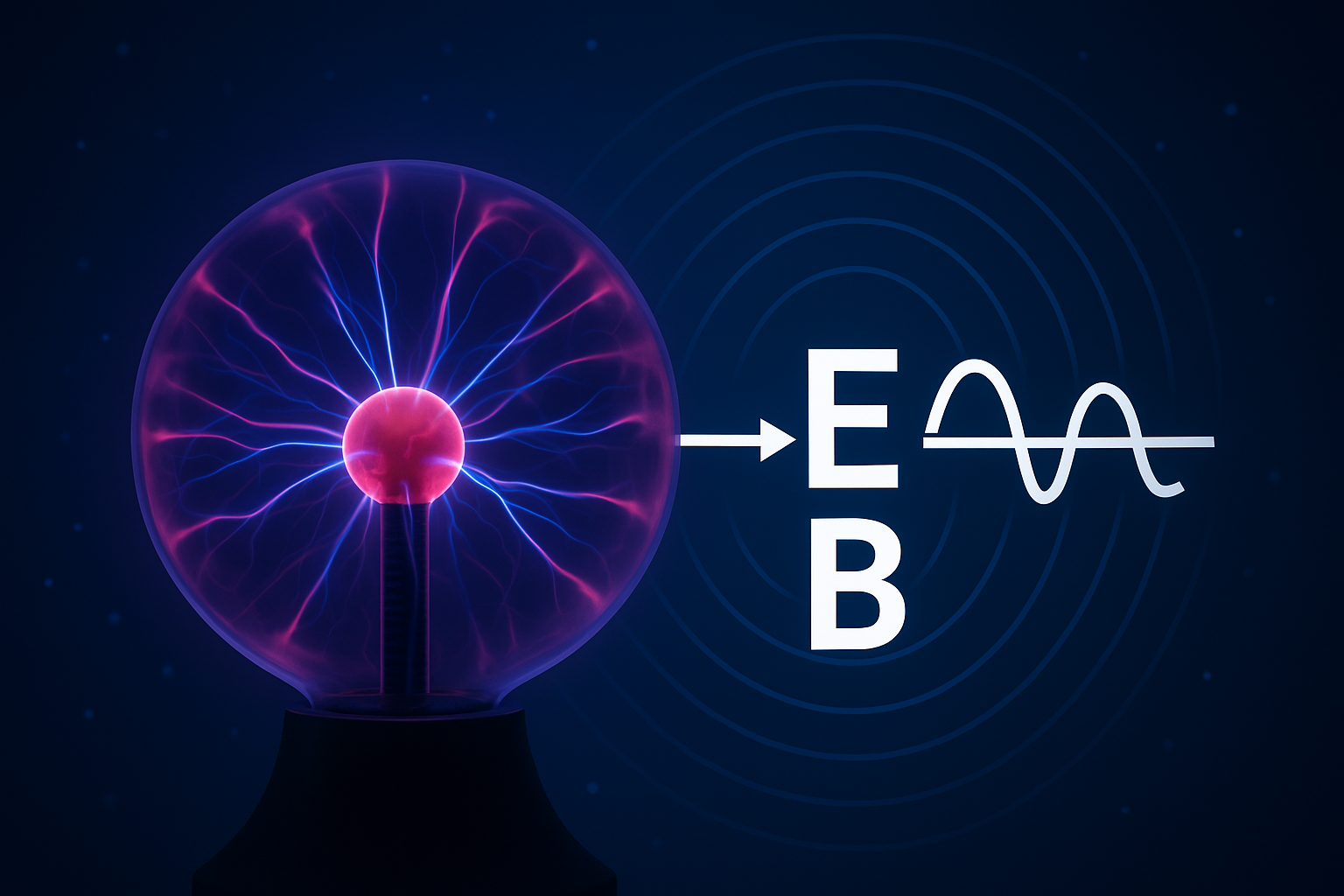The plasma ball in physics teaching: A classroom approach to plasma ionization
DOI:
https://doi.org/10.14295/bjs.v4i10.768Keywords:
electric field, electromagnetic field, teaching-learning, fourth state of matter, electric field sensorAbstract
Plasma is recognized by Physics as the fourth state of matter. However, the study of plasmas in schools and universities often faces challenges, mainly due to the high cost of science and physics laboratories, which can be inaccessible to many groups of students. As a viable and affordable alternative, devices such as the plasma ball have been used in teaching this physical state of matter, even allowing the quantification of electric fields and the observation of electromagnetic waves. This study aimed to use a low-cost plasma ball in teaching a university-level Physics class, enabling hands-on experiments related to the determination of electric and magnetic fields. For this purpose, a low-cost digital sensor for electromagnetism and electric fields, a neon lamp, and a metallic coin were used. Students learned how to calculate the power of the plasma ball and explore the concepts of electric fields and electromagnetism, when present. The introduction of simple and engaging teaching tools significantly contributed to the students' involvement. They showed increased interest and ease in understanding the concepts related to the Physics of Electromagnetic Interactions (Electromagnetism), highlighting the pedagogical potential of accessible instruments in the teaching-learning process. Therefore, Physics classes must include basic, low-cost equipment or materials that can be easily constructed from readily available resources to enhance the teaching of this exact science.
References
Arthury, L. H. M., Paganelli, E., Neto, L. G., & Dums, E. H. (2022). Uma bobina de Tesla de alta potência para o ensino de física. Revista Brasileira de Ensino de Física, 44, e20220059. DOI: https://doi.org/10.1590/1806-9126-rbef-2022-0059
Azpeitia, F. I. P. P., & Pons, J. A. M. (2019). La física es cool con el energy stick y la bola de plasma. Revista Española de Física, 33(1).
Bittencourt, J. A. (2004). Fundamentals of plasma physics. New York: Springer. DOI: https://doi.org/10.1007/978-1-4757-4030-1
Chen, F. F. (2016). Introduction to Plasma Physics and Controlled Fusion. 3rd ed. Springer. DOI: https://doi.org/10.1007/978-3-319-22309-4
Dewan, E. M. (1961). Generalizations of the Saha equation. Physics of Fluids, 4(6), 759-764. DOI: https://doi.org/10.1063/1.1706395
Erthal, J. P. C., Pirovani, F. E. S., & Campos, R. G. (2014). Globo de plasma: uma montagem simples com amplo potencial para discussões em sala de aula. Caderno Brasileiro de Ensino de Física, 31(3). DOI: https://doi.org/10.5007/2175-7941.2014v31n3p666
Freidberg, J. P. (2008). Plasma Physics and Fusion Energy. Cambridge: Cambridge University Press. DOI: https://doi.org/10.1017/CBO9780511755705
Higa, I., & Oliveira, O. B. (2012). A experimentação nas pesquisas sobre o ensino de Física: fundamentos epistemológicos e pedagógicos. Educar em Revista, 44, 75-92. DOI: https://doi.org/10.1590/S0104-40602012000200006
Panhwar, A. H., Ansari, S., & Ansari, K. (2016). Sociocultural theory and its role in the development of language pedagogy. Advances in Language and Literary Studies, 7(6), 183-188. DOI: https://doi.org/10.7575/aiac.alls.v.7n.6p.183
Pereira, E. B., & Robaina, J. V. L. (2020). Estudo do conhecimento sobre feira de ciências nas atas do ENPEC e na Base REDALYC: aspectos significativos ao processo de ensino e aprendizagem no Ensino Médio. Research, Society and Development, 9(7), e696974821. DOI: https://doi.org/10.33448/rsd-v9i7.4821
Rahmatirad, M. (2020). A review of socio-cultural theory. Journal of Religion, Social, Cultural and Political Science, 5(3), 23-31. DOI: https://doi.org/10.33258/siasat.v5i3.66
Souza, M. A. B., Gualberto, D. A., Neto, L. F. N., Soares, J. D. A., Fernandes, F. M., & Morais, E. A. (2021). Contribuições dos experimentos de Física em feiras e planetários itinerantes na desmistificação do aprendizado: Um estudo de caso de um grupo de educação tutorial na Unifei. Research, Society and Development, 10(7), e50010716859. DOI: https://doi.org/10.33448/rsd-v10i7.16859
Yunusov, R. F., & Yunusova, E. R. (2020). Investigation of the electric field of the plasma ball. Journal of Physics: Conference Series, 1683, 1-5. DOI: https://doi.org/10.1088/1742-6596/1683/3/032006
Zhao, L., Zhao, B., & LI, C. (2023). Alignment analysis of teaching-learning-assessment within the classroom: how teachers implement project-based learning under the curriculum standard. Disciplinary and Interdisciplinary Science Education Research, 5. DOI: https://doi.org/10.1186/s43031-023-00078-1

Downloads
Published
How to Cite
Issue
Section
License
Copyright (c) 2025 Antonio Carlos Pereira de Menezes Filho

This work is licensed under a Creative Commons Attribution 4.0 International License.
Authors who publish with this journal agree to the following terms:
1) Authors retain copyright and grant the journal right of first publication with the work simultaneously licensed under a Creative Commons Attribution License that allows others to share the work with an acknowledgement of the work's authorship and initial publication in this journal.
2) Authors are able to enter into separate, additional contractual arrangements for the non-exclusive distribution of the journal's published version of the work (e.g., post it to an institutional repository or publish it in a book), with an acknowledgement of its initial publication in this journal.
3) Authors are permitted and encouraged to post their work online (e.g., in institutional repositories or on their website) prior to and during the submission process, as it can lead to productive exchanges, as well as earlier and greater citation of published work.



